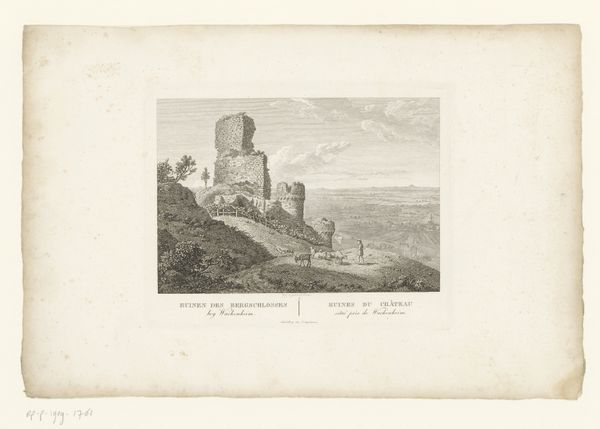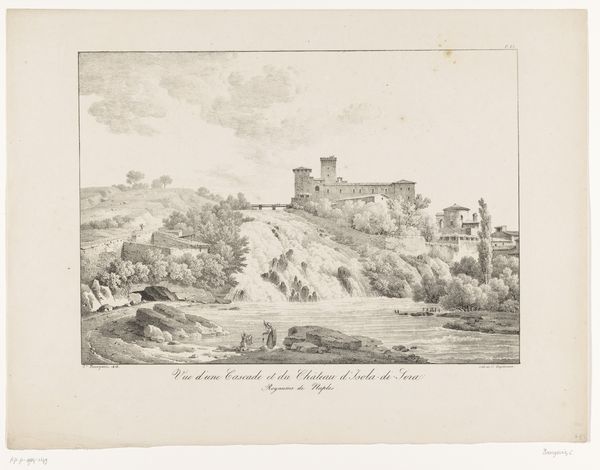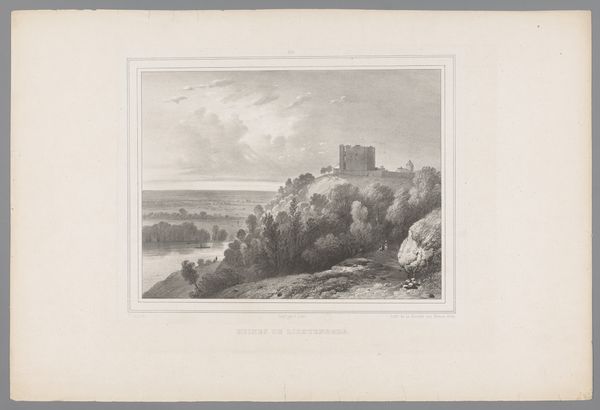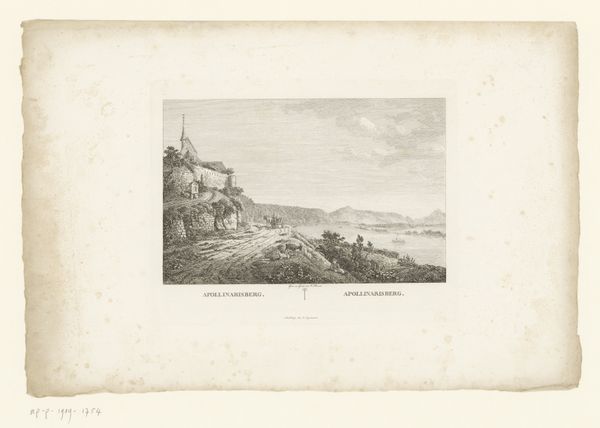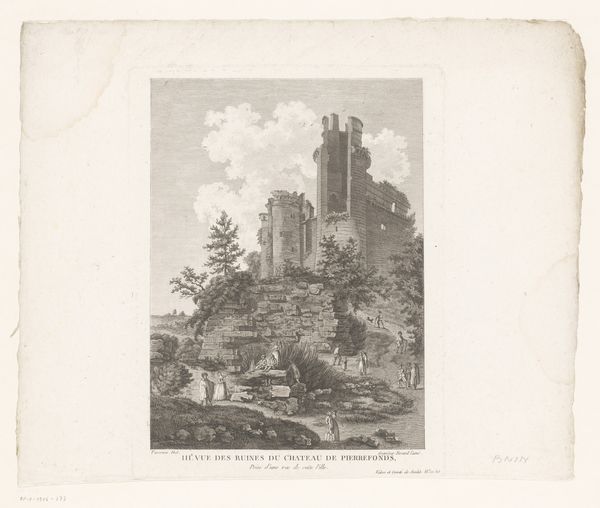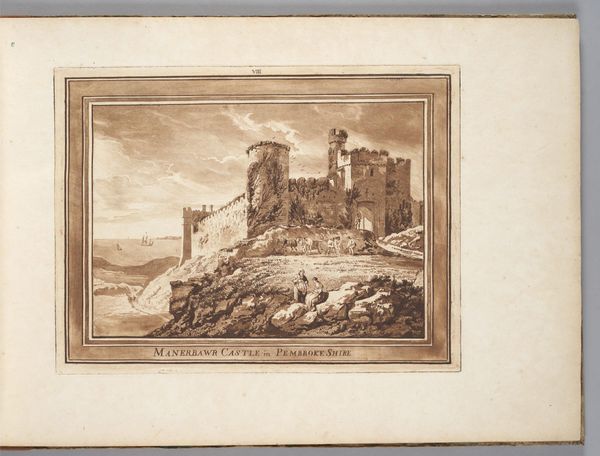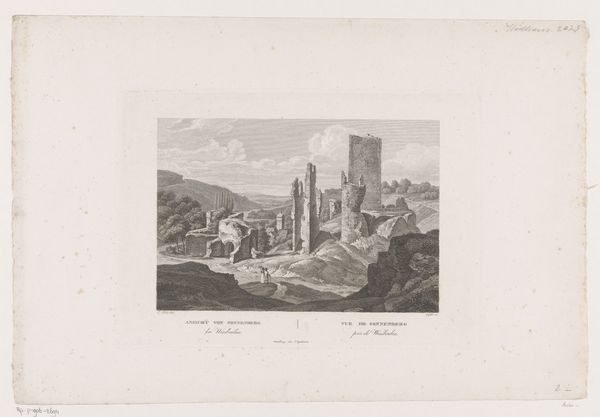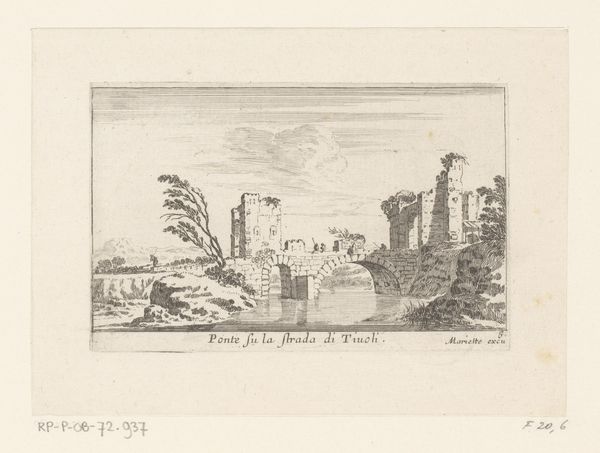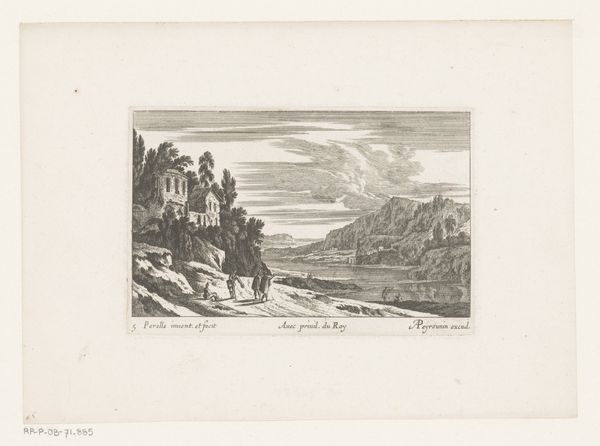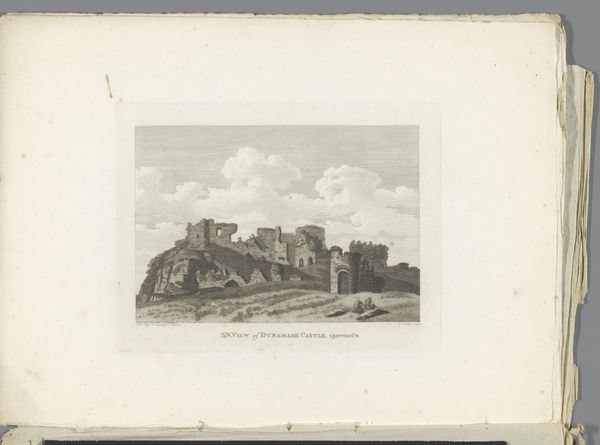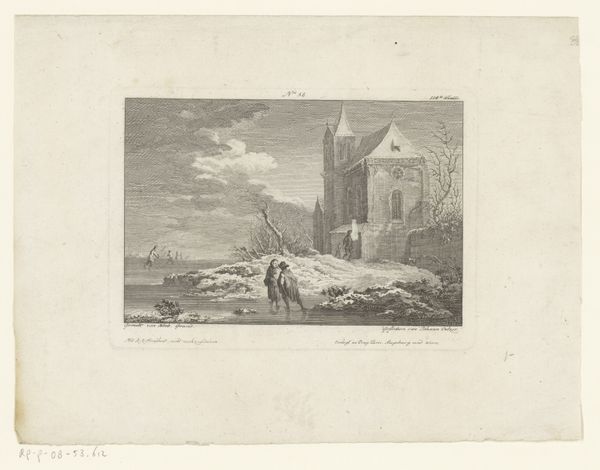
print, etching, paper, engraving
#
neoclacissism
# print
#
etching
#
old engraving style
#
landscape
#
paper
#
history-painting
#
engraving
Dimensions: height 205 mm, width 279 mm
Copyright: Rijks Museum: Open Domain
Curator: Here we have Joseph de Longueil's "Ruins of the Great Temple of Jupiter in Selinunte," an etching and engraving from sometime between 1740 and 1792, rendered on paper. It beautifully captures the Neoclassical fascination with antiquity. What's your first impression? Editor: Ruin and romance, baby! It has that sublime quality. Something crumbling that makes you feel…bigger, somehow? A grandiose past contrasting with our little present, that is very telling. It’s really lovely. Curator: Yes, "sublime" hits the mark. Neoclassicism frequently evoked a sense of awe through the depiction of ruins, hinting at the vastness of history and the transience of human achievement. Longueil does this through a very specific and visually charged symbolism. The temple itself represents the power of the past, specifically Greco-Roman civilization, while the ruins signify time's relentless march. Editor: And, of course, there are tiny figures scattered around the ruins like ants, which really rams the "transience" point home! The vastness of the setting almost dwarfs them. Look at how the cloud arrangement almost mirrors the fallen pillars! You can sense that this Jupiter Temple would have inspired both grandeur and fear with how they captured the light there. The figures look like they’re picking through the past – maybe searching for…meaning? Or just rocks? Curator: Precisely! Their presence invites contemplation on the cycle of civilization. There is the composition itself to analyze. Notice how Longueil employs a clear foreground, middle ground, and background? This receding space invites the eye to wander, symbolizing intellectual curiosity. Also, the stark contrast, achieved via fine lines, is so emblematic of Enlightenment ideals. Editor: Oh, that methodical engraving style practically screams "reason" to me. This image wants to teach you something while still letting you marvel at the artistry. In this Neoclassical rendering, you are transported, reflecting on grandeur while remaining self-aware. But isn’t there also something about the myth itself and how this piece uses symbolic elements? I sense Longueil intentionally captured this in monochrome, reducing the spectacle. Curator: Indeed! The deliberate rendering of classical history with monochromatic print helps to reduce subjectivity by delivering this important monument as a rational document, reinforcing history through visual observation as more reliable than myth. Editor: Huh. In any case, it does get you pondering life’s little questions! I feel refreshed. Curator: Precisely; let’s leave our listeners to continue pondering on their own!
Comments
No comments
Be the first to comment and join the conversation on the ultimate creative platform.
